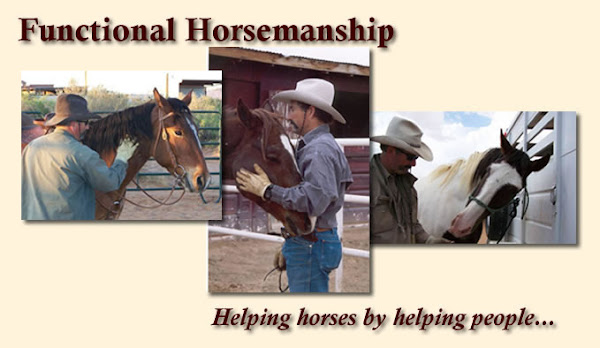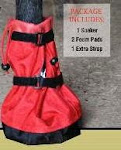Evelyn wrote to ask what can be done about a horse who bites. She explained that her horse likes to bend his head around sometimes and nip at her boots in the stirrups and she did not do anything but move her feet backwardsso he couldn't reach it. Then she said she was grooming her horse and reaching for a brush hanging up when her horse nipped her arm. Didn't break the skin but she said it hurt. She wanted to know if biting is a thing that escalates and what to do about it.
The bottom line is that if a horse puts his teeth on you, or does any other bad habit, and there are no consequences then yes, it will likely escalate. Its pretty common for many people to accept a horse putting their muzzle or lips on our hands or arms. We think thats cute and we get comfort from the horse displaying what seems like a level of comfort all their own. They get this way because we don't correct them violating our space and/or we help that along by feeding them treats by hand and they get to looking for them. But they get too comfortable doing this, moving their lips back and forth on our hand or arm, then the next thing you know they are placing their teeth on you. Again, I think some of this comes from feeding by hand, although I think a horse can sort out when you offering them a treat by hand and when you are not.
If one of my horses or a client's horse if putting his head too close to me, I'll just gently push him way. I may have to do it a couple times, but the horse will get the message...for a short while.....then you'll likely have to correct him again. But if a horse has a habit of moving his head to me, to put his mouth on my hand or my arm, I'll set it up so he bumps into my hand or arm. I'm actually bumping him with my hand or arm, but only having to move it a couple inches, so it seems to the horse that he bumped into my hand or arm.
It's been a long time since I've had a horse bend his head around and nip at my boot when I'm in the saddle. It may be a situation where the horse is uncomfortable, like you have him cinched up really tight, but maybe more likely you stopped and the horse is just bored. If he is bending to put his lips or teeth on my boot, I'll time it so when his mouth is an inch or two from my boot, I'll move my foot forward and make contact with him, in effect bumping into him, but the idea is for the horse to think he caused that contact.
I have a new horse right now (he's the one in the photo top right) and several weeks ago I was cleaning his stock tank and he has a practice where he'll come over the put his nose under my arm, or rub my arm or hand with his lips. He's just comfortable and curious, so I don't treat this like a federal crime, I just gently push him away. However, the other day he put his teeth on my arm so I reacted quickly bumping my arm into his mouth and yelling at him. He startled, turned quickly and moved away. The idea here is that for the first 2 or 3 seconds after the horse put his teeth on you, you react and the horse thinks you are trying to kill him. Your reaction has to be immediate and very short lived, a couple seconds. Again, this cannot be a delayed response otherwise the horse will not connect what he did (teeth on you) to your reaction. And to be clear, you are scaring him not whacking on him. Let him be for just a bit then you can approach, touch him and walk away.
In the case of this new horse, once I reacted like I did and he quickly moved away, he then stopped, turn and faced up about 20 feet away. I gave him 10 seconds or so, then I walked up to him and rubbed him on his head, then went back to cleaning the stock tank. I have since cleaned the stock tank a few times, and he'll come over and stand by me but has not yet put his lips on my arm or hand. It's likely it'll happen again in the short future, but generally after this he won't have that habit again.
I am not saying that you can only have a business type or strict relationship with your horse(s). I am not saying you cannot feed your horses by hand. I do, and in fact I feed them treats, a piece of an apple or carrot, by hand quite a bit. You can do so in moderation and in such a manner not to create a spoiled horse. I also rub on my horses a lot. I rub my face on their noses quite a bit as well. I have come to believe that I do this more for myself than for them, but in any extent, you have to set some boundaries. Horses are smart, they can sort the rules out, you just have to be clear and fair.



























